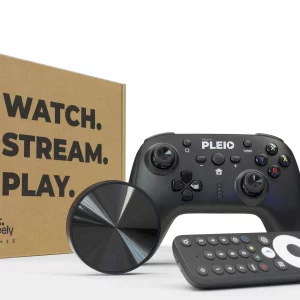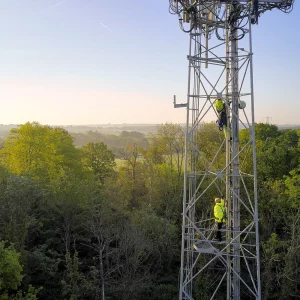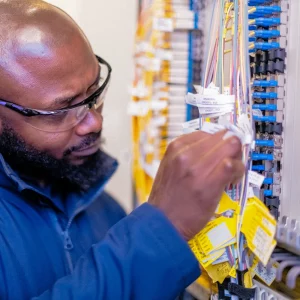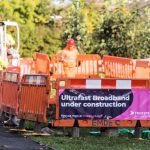Sponsored Links
The Real Importance of a 100Mbps National UK Broadband Speed
Posted: 06th Apr, 2010 By: MarkJ
 It's the infrastructure stupid! That's more or less what I keep telling myself each and every time somebody in Government or the mass media defines a future Next Generation Access (NGA) broadband service by the arbitrary headline download speed of 100Mbps. The figure has also become a whipping boy for opponents who claim that such speeds are unnecessary.
It's the infrastructure stupid! That's more or less what I keep telling myself each and every time somebody in Government or the mass media defines a future Next Generation Access (NGA) broadband service by the arbitrary headline download speed of 100Mbps. The figure has also become a whipping boy for opponents who claim that such speeds are unnecessary.The Wrong Perspective
They might just have a point. Many people probably won’t feel a pressing desire to upgrade; especially if they already get a reasonable speed (e.g. 6-8Mbps+) at a low price from their ISP, which should be enough to handle most online tasks with ease. Furthermore a majority of the internet’s services, such as website servers, are rate limited and distribute content at far slower speeds; this is necessary to keep costs under control. They would not offer any benefit to a 100Mbps user.
This is exactly the sort of dilemma that network operators and ISPs face, a very “chicken and the egg” scenario, where selling 100Mbps becomes challenging without a killer application to define it. We must also consider that even a 100Mbps service will suffer from the limits of shared capacity and other technological constraints, which can force real-world speeds to be far lower. Even countries that have been covered in fibre optic cable rarely display average speeds of more than 20-30Mbps.
Suffice to say that the voices of those opposed to spending lots of money on building NGA throughout the country have a lot of ammunition, especially during a strained post-recession financial climate. But it doesn’t have to be this way and any debate surrounding whether people need 100Mbps or not today often completely misses the point.
The CEO of BT Openreach, Steve Robertson, said it best last month (here):
"There’s an obsession with access speed, but when I look at the world from an Openreach perspective, the last thing I’ll actually be worried about is access speeds. Even if we’re talking about 20, 30, 40Mbits/sec access speeds, to actually give the end user a true 30 or 40Mbits/sec experience on an end-to-end basis, you very quickly get to issues around the backhaul network, the way that the server structure that supports the internet works, and a whole bunch of other things.
Access speed is really important... but it’s a lot more complex and richer discussion than just the obsession about headline speeds when it comes to the real end-user experience."
"There’s an obsession with access speed, but when I look at the world from an Openreach perspective, the last thing I’ll actually be worried about is access speeds. Even if we’re talking about 20, 30, 40Mbits/sec access speeds, to actually give the end user a true 30 or 40Mbits/sec experience on an end-to-end basis, you very quickly get to issues around the backhaul network, the way that the server structure that supports the internet works, and a whole bunch of other things.
Access speed is really important... but it’s a lot more complex and richer discussion than just the obsession about headline speeds when it comes to the real end-user experience."
The naysayers simply concentrate far too much on 100Mbps and not enough on the important infrastructure improvements that an underlying fibre optic broadband network should bring. To put it another way, our existing and largely copper wire based telecommunications infrastructure is broken, drastically so.
The Broken Infrastructure
Happily it doesn’t take reams of fancy research to demonstrate this point; you need only ask those who live a few kilometres further away from their local telephone exchange than they’d like. Drive far enough away from an exchange and even the fastest ‘up to’ 24Mbps ADSL2+ connection can break down to delivering less than a handful of Megabits per second. This can even afflict urban areas, it’s wrong to think of this as a purely rural issue, very wrong indeed.

(BT’s highly optimistic 2009 estimates)
Those at the outer reaches often have it far worse, with around one tenth of the UK population being lucky if they get up to 2Mbps; many suffer far worse, if indeed they can even get a stable connection. Ofcom’s own April 2009 statistics found that the average UK broadband download speed was estimated to be 4.1Mbps (here), far lower than the headline rates advertised by nearly all ISPs.
The reality here is that a 100Mbps capable network is nice to have, especially for future proofing, but its real benefit to ordinary consumers will come from an ability to deliver minimum broadband speeds with greater reliability. For example, BT’s Fibre-to-the-Cabinet ( FTTC ) technology is capable of delivering speeds at up to 40Mbps but its minimum is in the respectably strong 12-15Mbps range.
What does Next Generation Broadband really get us?
Somebody who might have only been able to achieve 1Mbps with ADSL2+ is going to see quite a difference; 10Mbps+ is more than capable of coping with a lot of the Internet’s most demanding content, including appropriately well compressed High Definition (HD) style video content (usage allowances permitting). Faster speeds will also open up the possibility to launch truly feasible HD IPTV (Internet TV) services, which up until now have often been hampered by the limits of existing technology.

(FTTH Council Europe Graph)
Another often ignored aspect is the improvement in upload (upstream) performance, with speeds of 2-10Mbps or faster being possible on FTTC and FTTH / P. This will be a crucial improvement for social networking and the rapid growth of consumer video sharing on websites like YouTube. Such technologies also benefit latency, which helps those who enjoy playing online multiplayer games with their friends.
Still, price is likely to remain the biggest stumbling block here, with higher speeds typically costing more than slower/existing packages. ISPs will need to offer a mix of packages just as they do today but based off the new infrastructure. This should make the services easier to sell and manage, lest we run the risk of faster NGA broadband technology being perceived as a purely premium product.
Building a new network takes time and it’s often not so much about serving today’s needs as it is about coping with the requirements of tomorrow, which is where 100Mbps itself might finally become important. In other words, it needs to be finished BEFORE our future becomes the present.
One final point to make is whether or not the fastest products, such as 100Mbps FTTH / P and Virgin Media UK's forthcoming 100Mbps package, should even be marketed as "broadband" anymore. For the most part these are more than mere upgrades and appear to go beyond the original definition. But just calling them by their technology name would probably cause too much confusion.
Search ISP News
Search ISP Listings
Search ISP Reviews
Latest UK ISP News








Cheap BIG ISPs for 100Mbps+
150,000+ Customers | View More ISPs
Cheapest ISPs for 100Mbps+
Modest Availability | View More ISPs
Latest UK ISP News
Helpful ISP Guides and Tips
Sponsored Links
The Top 15 Category Tags
- FTTP (6735)
- BT (3866)
- Politics (3050)
- Business (2740)
- Openreach (2634)
- Building Digital UK (2497)
- Mobile Broadband (2444)
- FTTC (2133)
- Statistics (2110)
- 4G (2069)
- Virgin Media (2003)
- Ofcom Regulation (1766)
- 5G (1701)
- Fibre Optic (1591)
- Wireless Internet (1586)
Sponsored
Copyright © 1999 to Present - ISPreview.co.uk - All Rights Reserved - Terms , Privacy and Cookie Policy , Links , Website Rules































